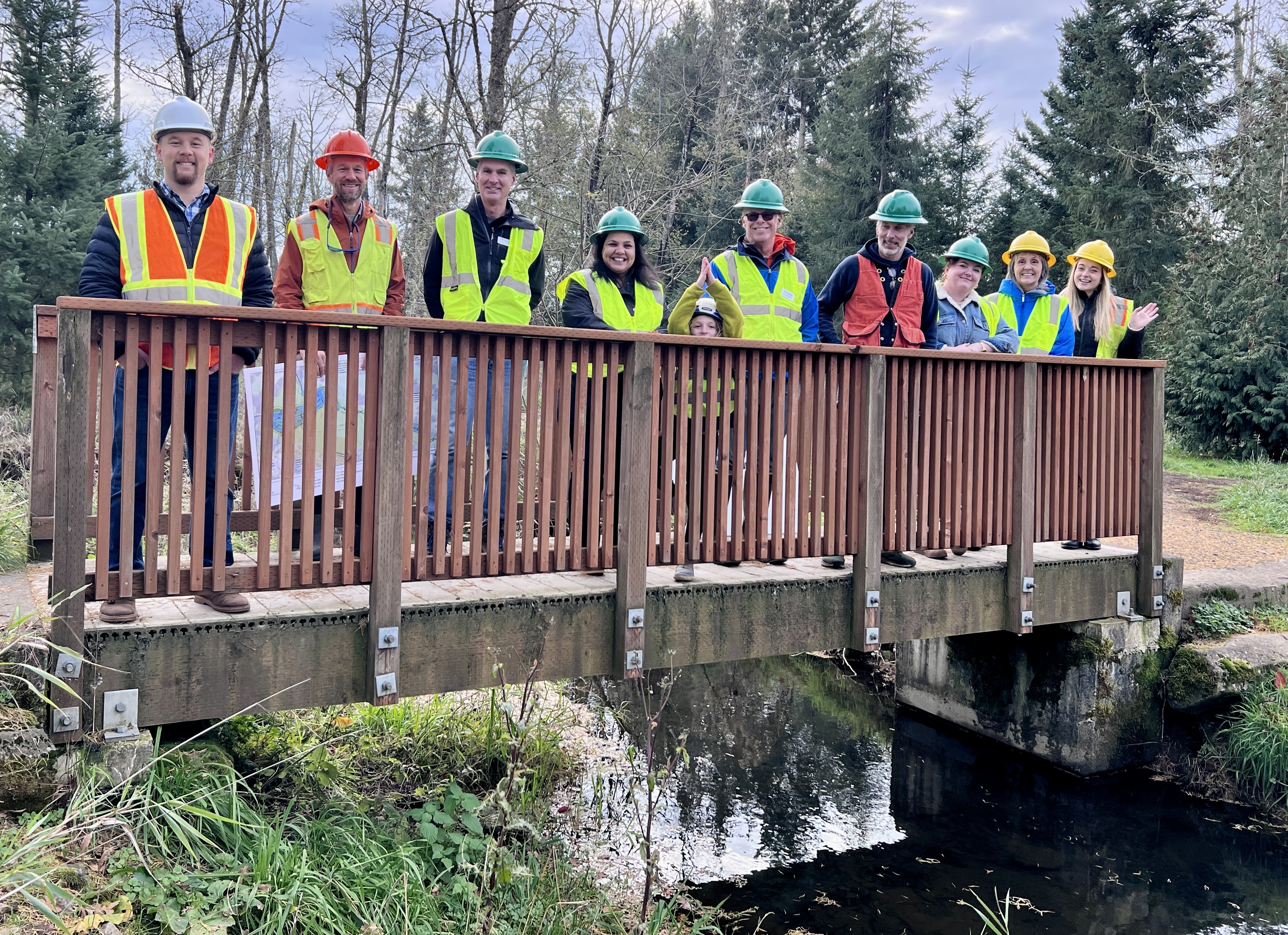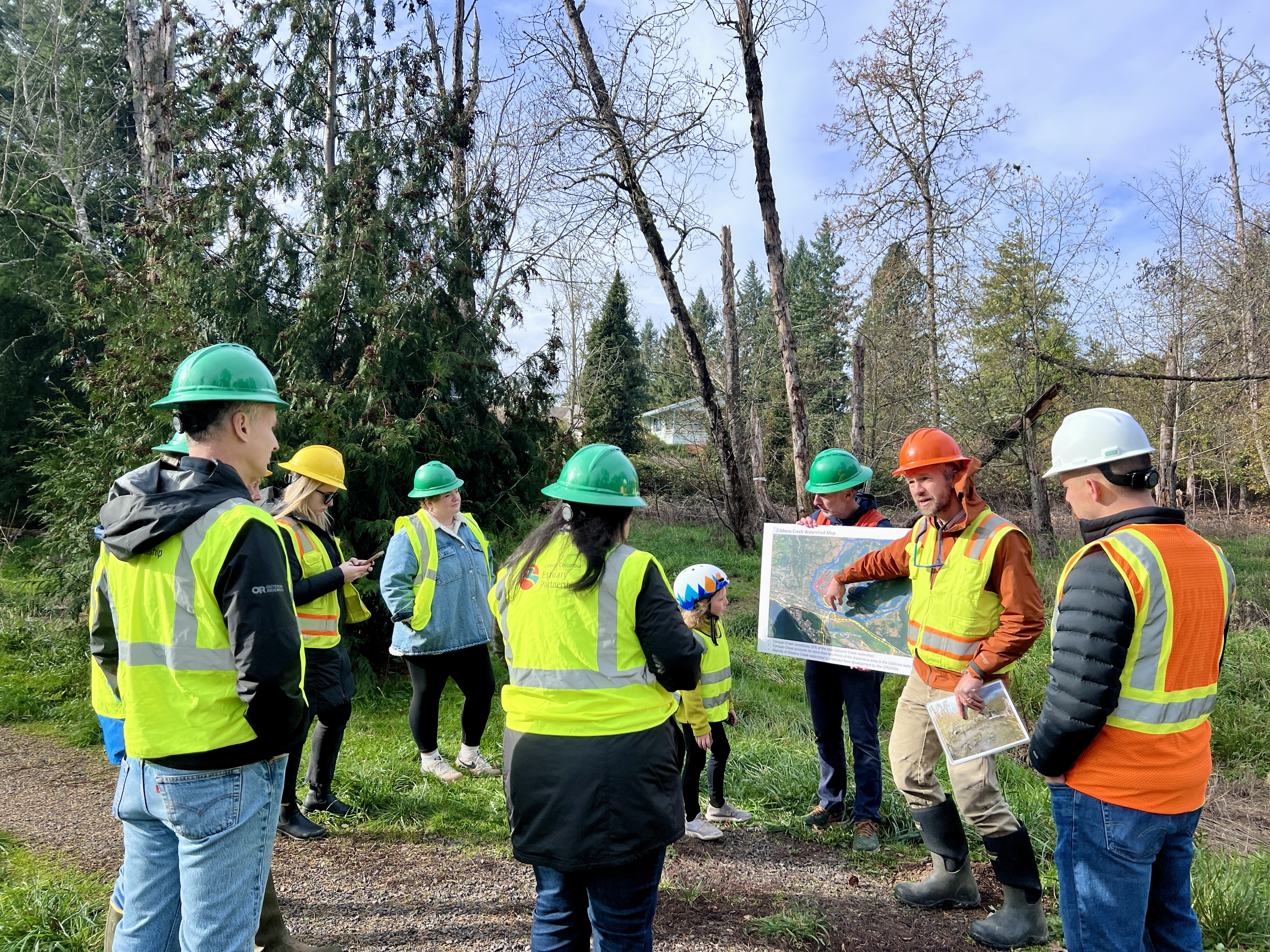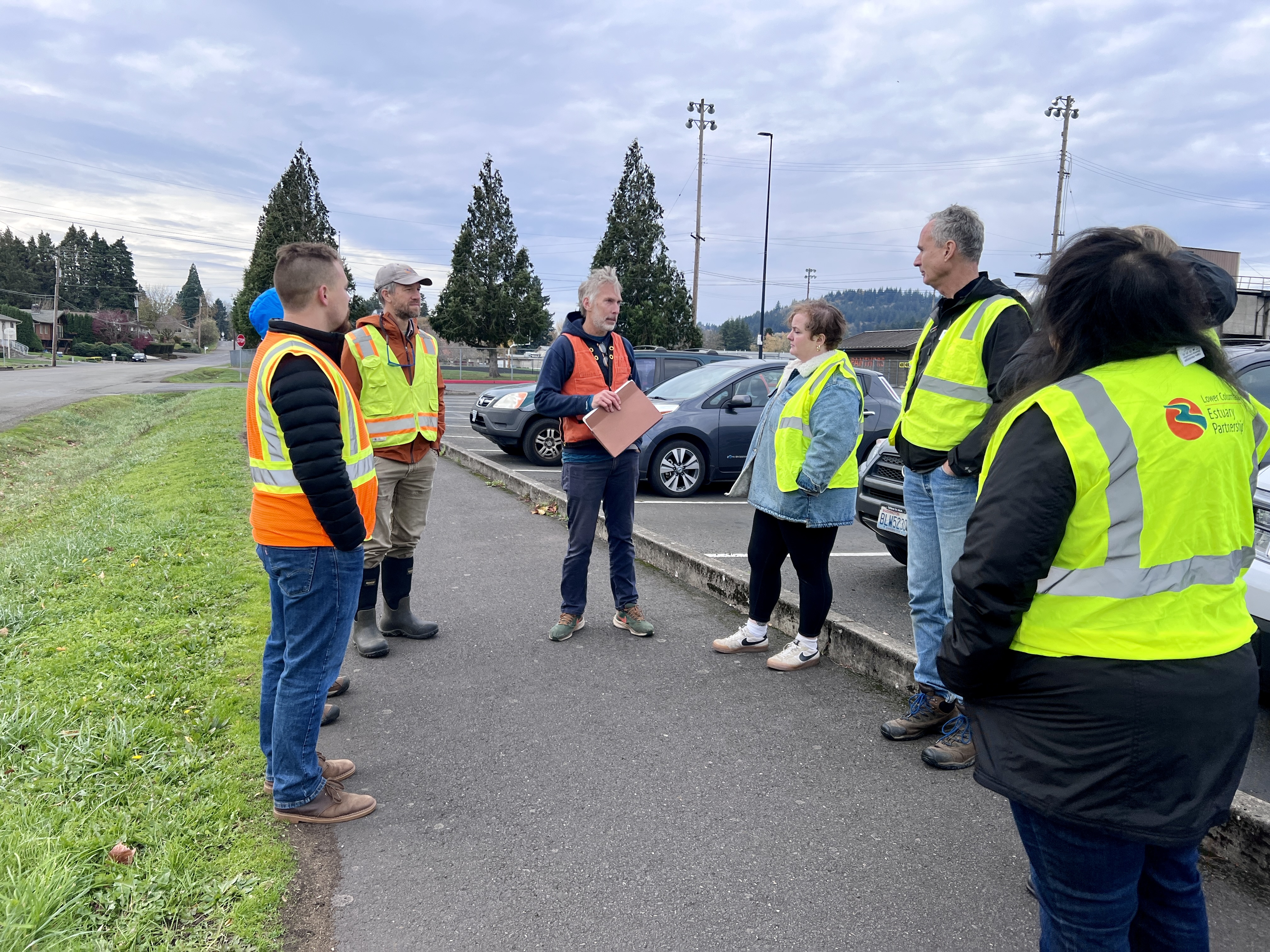Congressional staffers tour new project sites in the watershed above Steigerwald Lake National Wildlife Refuge
After the successful completion of the Steigerwald Reconnection Project, involving the natural reconnection of Gibbons Creek to its alluvial fan and the Columbia River, the Estuary Partnership is looking upstream for more ways to benefit water quality, reduce flood risk, and improve conditions for salmon, lamprey, and other species. Two projects, the Campen Creek Reconnection Project and the Washougal High School stormwater retrofit project, aim to do just that.
Campen Creek is the largest and most urbanized tributary within the Gibbons Creek watershed. Campen Creek enters Gibbons Creek just before Gibbons Creek flows through the Steigerwald Lake National Wildlife Refuge and into the Columbia River.
On Saturday, November 18, the Estuary Partnership hosted a site tour for staff members from the offices of U.S. Senator Maria Cantwell, U.S. Senator Patty Murry, and U.S. Representative Marie Gluesenkamp Perez. Port of Camas-Washougal Director Cassi Marshall, City of Washougal Stormwater Program Supervisor Sean Mulderig, and members of the Gorge Refuge Stewards Board of Directors also joined the tour.

The tour began at Mable Kerr Park, a city-owned urban park featuring walking trails and wildlife habitat; the lower 0.5 miles of Campen Creek flows through the park. The goal of the Campen Creek Reconnection Project is to reconnect the creek to its restored floodplain and improve public access to the neighborhood park. Restoring the creek’s connection to its floodplain will increase shallow groundwater reserves, slow the velocity of water during flood events, provide improved habitat for salmon and lamprey, and filter out toxic chemicals from upstream stormwater that enter the creek from places like the Washougal High School parking lot.

After seeing the plans for Campen Creek’s restoration at Mable Kerr Park firsthand, the group traveled a short distance to Washougal High School to see the future site of the Campen Creek Stormwater Improvement Project. The high school campus represents the largest continuous track of impervious service in the Campen Creek watershed. Stormwater pollution from the campus flows directly into Campen Creek, where it then travels through Mable Kerr Park before entering Gibbons Creek and the wildlife refuge. The Estuary Partnership is working with the city and school on a seven-acre stormwater retrofit project to treat polluted stormwater from the school and nearby city blocks before it flows into Campen Creek.
Both projects are still in the design phase. The Estuary Partnership is focused on finalizing the designs, conducting community outreach about the projects, and securing the necessary permits. The projects are expected to break ground in 2025-26.

The Campen Creek Reconnection Project and the Campen Creek Stormwater Improvement Project benefit from investments made possible through the Infrastructure Inflation and Jobs Act. Additional funding for the Campen Creek Reconnection Project comes from the National Fish and Wildlife Foundation. The Department of Ecology and City of Washougal are also supporting the stormwater project at the high school.